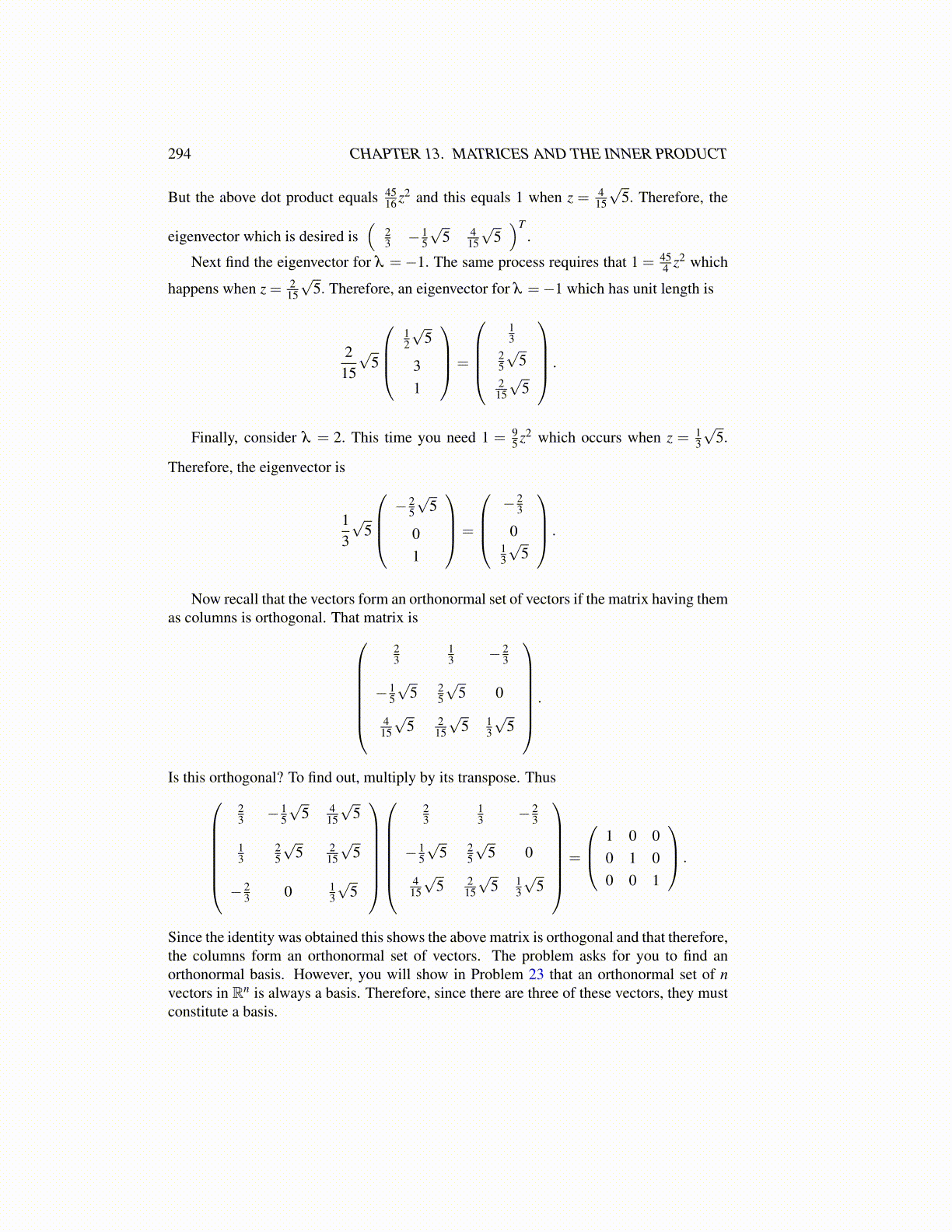
294 CHAPTER 13. MATRICES AND THE INNER PRODUCT
But the above dot product equals 4516 z2 and this equals 1 when z = 4
15
√5. Therefore, the
eigenvector which is desired is(
23 − 1
5
√5 4
15
√5)T
.
Next find the eigenvector for λ = −1. The same process requires that 1 = 454 z2 which
happens when z = 215
√5. Therefore, an eigenvector for λ =−1 which has unit length is
215
√5
12
√5
31
=
13
25
√5
215
√5
.
Finally, consider λ = 2. This time you need 1 = 95 z2 which occurs when z = 1
3
√5.
Therefore, the eigenvector is
13
√5
− 2
5
√5
01
=
− 2
3
013
√5
.
Now recall that the vectors form an orthonormal set of vectors if the matrix having themas columns is orthogonal. That matrix is
23
13 − 2
3
− 15
√5 2
5
√5 0
415
√5 2
15
√5 1
3
√5
.
Is this orthogonal? To find out, multiply by its transpose. Thus
23 − 1
5
√5 4
15
√5
13
25
√5 2
15
√5
− 23 0 1
3
√5
23
13 − 2
3
− 15
√5 2
5
√5 0
415
√5 2
15
√5 1
3
√5
=
1 0 00 1 00 0 1
.
Since the identity was obtained this shows the above matrix is orthogonal and that therefore,the columns form an orthonormal set of vectors. The problem asks for you to find anorthonormal basis. However, you will show in Problem 23 that an orthonormal set of nvectors in Rn is always a basis. Therefore, since there are three of these vectors, they mustconstitute a basis.